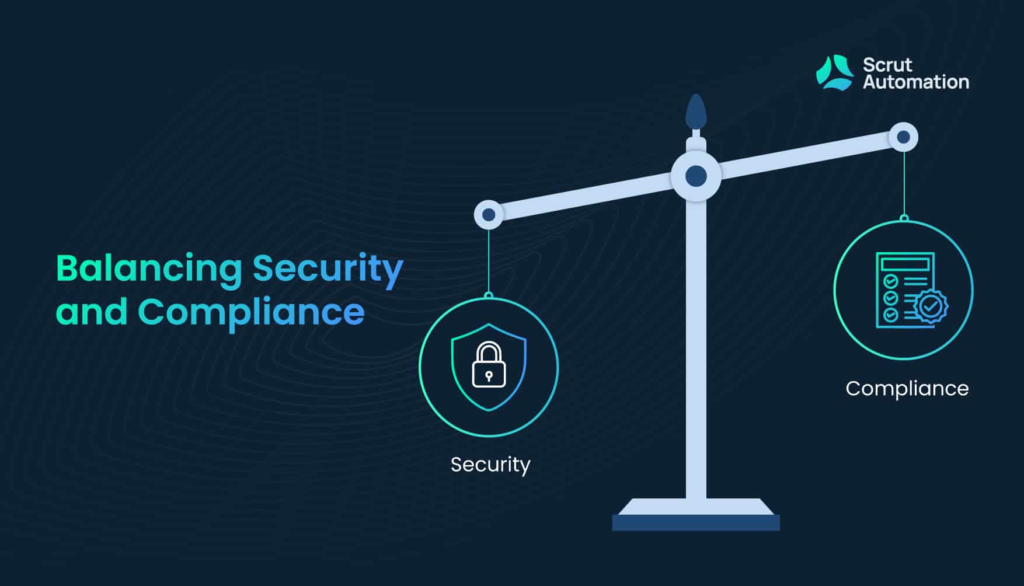
Introduction: Understanding the Rise of Wepbound
In the dynamic world of digital transformation, Wepbound emerges as a term that is drawing attention across tech circles, cybersecurity forums, and digital development platforms. Whether you’re a tech enthusiast, developer, or someone just curious about web services and security, understanding what Wepbound represents is critical. As the internet becomes an integral part of our everyday lives, terms like Wepbound become more than just jargon—they symbolize new shifts in how data, applications, and infrastructure are being safeguarded and optimized. In this article, we break down everything about Wepbound: what it means, how it works, where it’s applied, and why it matters now more than ever. The concept holds great significance, especially in contexts where secure web frameworks and controlled digital ecosystems are vital. With cyber threats on the rise and digital services evolving rapidly, Wepbound seems poised to play a pivotal role in the future of the internet.
What Does Wepbound Actually Mean?

At first glance, Wepbound may seem like a cryptic tech term, possibly related to a web-based protocol, a platform, or a security strategy. In reality, it’s a multi-faceted term that potentially refers to a concept or a project rooted in secure, encrypted, and controlled access to digital resources. Though not officially defined by industry standards yet, Wepbound is being used in various technical forums to describe systems or platforms that bind users to protected web environments—ensuring no unauthorized access is possible. It’s a hybrid word formed from “Web” and “Bound”, symbolizing a web structure that is tightly secured or restricted to a predefined set of rules and permissions. Think of it as an extension of current cybersecurity strategies like HTTPS, VPNs, and firewalls—but more intelligently managed and user-centric. As newer definitions surface, Wepbound could also align with decentralized security protocols or smart contracts used in Web3 technologies.
The Growing Need for Secure Digital Spaces
Today’s internet landscape is a double-edged sword. On one hand, it offers immense possibilities for collaboration, learning, and innovation. On the other, it opens the door to data breaches, identity theft, ransomware attacks, and other forms of cybercrime. According to Statista, over 4,100 data breaches occurred globally in 2023 alone, impacting billions of users. That’s where concepts like Wepbound become crucial. They address the foundational issue of uncontrolled digital access and aim to reinforce web environments with stricter control layers. More companies, institutions, and even governments are now investing in technologies that create bound web zones—digital spaces where access is governed, monitored, and encrypted. Wepbound fits perfectly into this narrative as it combines encryption, authorization protocols, and dynamic user access management into one seamless system. It promotes a secure, structured, and intelligent web ecosystem that is resilient against external threats.
Wepbound in Action: Where It’s Being Used
Though still in its conceptual phase for mainstream adoption, Wepbound is already being explored in numerous sectors. For instance, educational platforms are starting to integrate web-bound systems where students can only access specified learning materials, eliminating distractions and ensuring academic integrity. In the healthcare industry, patient portals now restrict data access to authenticated users only, using encrypted tunnels—a practical example of Wepbound in action. Financial systems are implementing similar strategies, where account access is restricted to specific IPs or devices and protected through multi-factor authentication and tokenized logins. Even government services and legal frameworks are slowly migrating to platforms that embody the essence of Wepbound, ensuring transparency and controlled dissemination of sensitive data. Each of these examples highlights the increasing relevance of secure, access-bound web structures in our digitally connected lives.
Key Features That Make Wepbound Unique
Wepbound is not just another buzzword floating in tech space—it stands out due to its intelligent structure and adaptive nature. Whether used in cloud environments or on isolated servers, its features bring measurable improvements in security, user experience, and control. Below are five distinctive features that make Wepbound noteworthy:
- Bound Access Control: Unlike traditional open-access networks, Wepbound enforces strict user permissions that adapt to real-time contexts and user behaviors.
- Data Encryption Layers: It adds extra layers of encryption, not only during data transmission but also at rest, which prevents unauthorized data extraction.
- IP and Device Locking: Users can only log in from registered devices or IP ranges, thereby adding a physical dimension to virtual security.
- Intelligent Threat Detection: Wepbound systems often incorporate AI-driven threat monitoring tools that learn from access patterns and block suspicious behavior.
- Multi-Factor and Token Authentication: The framework heavily relies on identity confirmation processes that go beyond basic username-password combinations.
How Wepbound Compares to Traditional Web Protocols
To better understand Wepbound’s edge, we can compare it to traditional web access systems such as HTTPS, VPNs, and firewalls. These conventional systems offer layers of security, but they often work in isolation and lack the smart coordination that Wepbound aims to deliver. For example, HTTPS encrypts data between a browser and server but doesn’t monitor user behavior post-access. VPNs hide IPs but can still be exploited if user credentials are compromised. Firewalls block unapproved entries but may fail against internal threats. In contrast, Wepbound combines these tools under one cohesive system, making security a multi-layered, context-aware process. Below is a comparison table for clarity:
| Security Tool | Scope of Protection | Weakness | Wepbound Improvement |
| HTTPS | Data in transit | No behavior monitoring | Adds post-access control |
| VPN | IP masking | Compromised credentials | Device/IP locking included |
| Firewall | Entry prevention | Weak against internal breaches | Real-time AI monitoring |
The Role of Artificial Intelligence in Wepbound
Artificial Intelligence (AI) plays a transformative role in modern Wepbound systems. AI models are trained to monitor user behavior, flag anomalies, and predict future security risks. Imagine a user logging in at an unusual hour from an unknown location—traditional systems might allow it if the password is correct, but Wepbound’s AI would intervene, flag the access, or temporarily freeze it for further verification. This intelligent layer minimizes the chances of unauthorized intrusions. AI in Wepbound also assists in dynamic user permission adjustment. Based on usage history, tasks performed, and resource sensitivity, the AI can elevate or restrict access levels in real-time. This kind of adaptability ensures that users only have the rights they genuinely need—no more, no less. In a world where cybersecurity needs to stay one step ahead of attackers, AI-enhanced systems like Wepbound offer a significant strategic advantage.
Web3 and the Potential Intersection with Wepbound
One of the most exciting areas where Wepbound might evolve further is within Web3 environments. Web3 promises a decentralized internet where users control their own data and identity, often via blockchain technology. Wepbound can serve as a control mechanism in this decentralized structure. For instance, smart contracts can be governed under Wepbound-like access conditions, ensuring that only authorized wallets or identities interact with specific parts of the network. This could be revolutionary for Decentralized Finance (DeFi), Decentralized Autonomous Organizations (DAOs), and NFT platforms. As Web3 matures, Wepbound may not just be about user access—it could define how digital assets are governed, distributed, and protected. The integration could be as profound as HTTPS was for the traditional internet, establishing trust layers in peer-to-peer environments that otherwise lack centralized control.
How Developers Can Leverage Wepbound
For developers, Wepbound offers new ways to secure applications from the ground up. By integrating Wepbound principles into the development lifecycle—often referred to as DevSecOps—developers can design platforms where every user interaction is authenticated, logged, and validated. APIs can be configured to allow only specific devices, reducing the risk of data leaks through third-party applications. Admin dashboards can be shielded behind multiple authorization gates that track not just login credentials but also session behavior. Database access can be isolated into roles, where permissions change dynamically depending on context. In practical terms, developers are now beginning to use frameworks like Node.js and Python in combination with Wepbound-style authentication libraries. The goal isn’t just to create apps—it’s to create ecosystems where security isn’t an afterthought but a default setting.
The Business Case for Implementing Wepbound
For organizations, investing in Wepbound translates to reduced risk, improved compliance, and stronger customer trust. Data breaches can cost millions—not just in financial losses, but also in reputational damage. With increasing regulations like GDPR, HIPAA, and CCPA, businesses are legally required to protect customer data at all costs. Wepbound offers a proactive approach to compliance by ensuring that sensitive information is always behind secured, access-controlled environments. Customers also feel more confident when interacting with platforms that clearly demonstrate secure practices. A survey by Cybersecurity Ventures showed that 68% of online users prefer using services that communicate their security measures openly. Implementing Wepbound features such as two-factor authentication, behavior-based access, and encrypted storage helps companies stay ahead of both legal mandates and public expectations.
Real-World Challenges in Adopting Wepbound
While the benefits are many, the road to full Wepbound adoption isn’t without hurdles. The biggest challenge is integration with legacy systems that weren’t built with these principles in mind. Migrating old databases and apps into a Wepbound-compliant structure often requires overhauling the existing architecture, which can be expensive and time-consuming. There’s also the issue of user adaptability. Not every user is ready for complex authentication layers or conditional access. User experience (UX) must be preserved while maintaining security—which requires careful design. Finally, implementation costs can be high, especially for startups or small businesses. However, these obstacles are not insurmountable. With proper planning and incremental implementation, organizations can transition smoothly into a Wepbound-enabled environment.
Wepbound and the Future of Digital Education
Education is another domain where Wepbound is beginning to make a noticeable impact. Online learning platforms often suffer from unauthorized access, content piracy, and cheating. Wepbound systems can lock content based on user role, device, and time of access. For example, a quiz can only be accessed once, from one device, and during a specific window of time. This prevents academic dishonesty and secures proprietary course material. Moreover, learning management systems can use AI to detect anomalies in student performance or behavior, helping educators identify areas of concern. Wepbound can also ensure that personal data like test scores and attendance logs remain confidential and encrypted. With remote education on the rise, implementing such robust systems isn’t just helpful—it’s essential.
Security Versus Usability: Striking the Right Balance

A major dilemma in cybersecurity is balancing robust protection with ease of use. Wepbound tries to bridge this gap by incorporating intelligent automation and context-aware adjustments. For instance, a user frequently accessing a system from one location might get streamlined access, whereas any unusual activity will trigger extra checks. This way, Wepbound enhances security without causing constant user friction. The focus is on smart friction—introducing challenges only when something seems off, not during every routine interaction. This is particularly important in customer-facing services, where delays or complex logins can lead to churn. Wepbound’s modular approach means different levels of security can be applied based on sensitivity, risk, and user profile. It’s not a one-size-fits-all model—it’s customizable and user-conscious.
Conclusion: Why Wepbound Deserves Your Attention
In a world increasingly defined by digital interactions, the importance of secure, reliable, and intelligent web ecosystems cannot be overstated. Wepbound is more than a passing trend; it represents a fundamental shift in how we think about and implement web security. Whether you’re a business owner, developer, educator, or policy-maker, the principles behind Wepbound offer a roadmap to safer and smarter digital environments. By adopting Wepbound frameworks, systems can become more resilient, users more protected, and data more controlled. As cyber threats become more advanced and digital footprints expand, tools and philosophies like Wepbound will lead the charge in defending our digital futures. In essence, Wepbound is not just about restricting access—it’s about redefining what responsible digital management looks like.
Frequently Asked Questions (FAQs)
1. Is Wepbound an official security standard?
No, Wepbound is currently more of a concept or term that embodies a new way of thinking about secure, bound access to digital services. It may evolve into a standard as adoption increases.
2. Can small businesses implement Wepbound without large budgets?
Yes, many Wepbound principles—like multi-factor authentication, IP locking, and encrypted data storage—can be implemented with open-source tools or cloud services at minimal cost.
3. How is Wepbound different from traditional firewalls or VPNs?
Wepbound combines the features of firewalls, VPNs, and other tools into a smart, cohesive system that adapts to user behavior and provides layered, dynamic access control.



